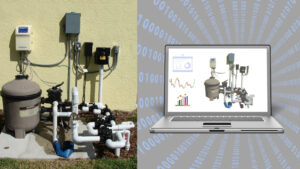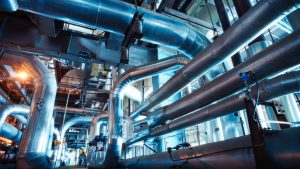Industrial Internet of Things is commonly abbreviated as IIoT and refers to a network of industrial devices connected by communication technologies.It monitors, collects, exchanges, analyses, and delivers data, providing valuable new data analytical insights to industrial automation. It is at present used explicitly by utility companies, including those specialising in water utility services. Integrating intelligent sensors, networks, data analytics and industry 4.0 technologies, IIoT vastly helps the water industry to execute its responsibilities.
Only 3% of freshwater is suitable for drinking out of 70% of the water on planet Earth. However, given that most of it are frozen in inaccessible glaciers, in reality, there is only 1% of drinking water available for humans, crops, and animals. Hence, since water utility services hold the burden of managing this limited supply amidst the world’s increasing population and the effects of climate change, they constantly need alternatives to store clean water across their regions.
There are currently two possible solutions to this problem, including the identification of exploitation of new water resources (supply-oriented solution) or managing the already available water resources in a feasible manner (demand-oriented solution). While the supply-oriented solution will require more time, the demand-oriented solution can be implemented in the immediate future. Hence, it is in order to better utilise the available drinking water that IIoT is used to build a robust infrastructure.
How does IIoT transform Water Utility Services?
IIoT is at present globally recognised as a worthy investment. According to tdworld.com, its integration into the utility market is expected to grow to USD 53.8 billion by 2024. To understand why IIoT is chased after, you must first consider how exactly IIoT has transformed the water utility services:
Monitor Remotely and Save Resources
Typically your team will have to go to remote installations occasionally and act fast whenever needed. Hence, not only will you need a large workforce if you were to deploy people across remote installations, but you will not know how the installation is doing until one inspects it in person and generates a report. By incorporating IIoT, this process becomes automated and gives you the flexibility to monitor the installation from wherever. For instance, smart sensors can monitor tank water levels in real-time and share information on how much water is consumed in each region. Through this, you can direct your resources to where it is urgently required whilst also managing your supply.
Get Consumers to Conserve Water
As highlighted above, it is pivotal that measures are taken to safeguard the freshwater that is available for human drinking. This great responsibility should not be one that solely rests on the shoulders of water utility companies but must be shared by all humans. One great way of influencing consumers to conserve water is to provide data on how much water is used in their households. Accordingly, one can now monitor their intake using IIoT technology such as smart water meters, a pioneering innovation for countries such as Australia, which faces the risk of water scarcity in the near future.
Wastewater Treatment and Management
Due to the limited drinking water available, getting fresh water every time a tank finishes is not always feasible. Instead, the utility sector has found that the used water should be thoroughly cleaned, and this can be done using IIoT technology. Considering that wastewater treatment and management is a technical process on which the lives of humans depend, it is only through industrial 4.0 technologies that safe drinking water can be guaranteed. The system will thus be able to provide data on the toxic contaminants in the water and help separate them successfully. This is scientifically a far more effective and cost-saving method of ensuring safe water.
Gain more control
What particularly makes IIoT different is the communication between operational technology and information technology. The operational technologies, including processes and industrial control systems, converge with information technologies stored in the enterprise system. By doing so, IIoT provides valuable insights on how you can gain better control of process operations and safety management. This includes, for example, how IIoT is able to provide detailed real-time data in seconds, giving you reliable information to make a decision. At present IIoT is infused with predictive analytics to further warn you of future risks that may occur, ensuring that you provide the correct maintenance for water asset systems.







